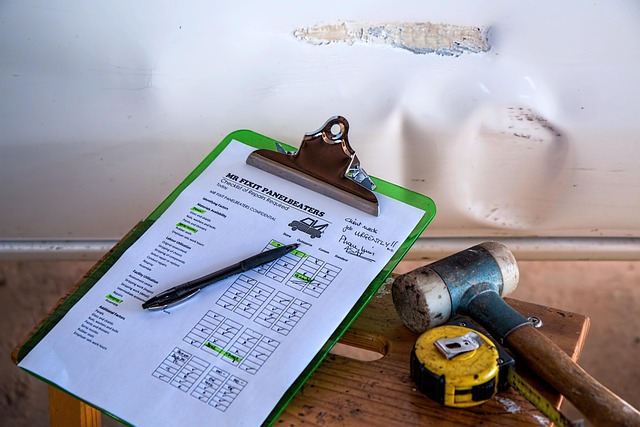Airbag Safety Certification: Real-World Impact on Automotive Protection
Airbag safety certification is a vital process ensuring airbags in vehicles meet stringent performan…….
Airbag safety certification is a critical process that guarantees the effectiveness and reliability of airbag systems in vehicles, playing a pivotal role in enhancing passenger safety. This comprehensive article delves into the intricacies of this certification, exploring its historical development, global impact, technological innovations, regulatory framework, and future prospects. By examining these aspects, we aim to provide a thorough understanding of why airbag safety certification is not just a process but an indispensable component of modern automotive security.
Airbag safety certification refers to the rigorous evaluation and testing process that ensures airbag systems meet stringent safety standards. An airbag, upon detection of a collision or severe deceleration, inflates rapidly to protect occupants from impact. The certification involves assessing various aspects, including:
The concept of automotive airbags dates back to the 1950s when French engineer Georges Abitbol developed an early airbag system. However, it was the severe injuries and fatalities during the 1970s and 1980s that prompted automakers and regulators to take serious action. The first mandatory airbag regulations were introduced in the U.S. in 1990, followed by Europe and other regions. This led to a rapid evolution in airbag technology and certification processes.
Over time, certification standards have become more sophisticated, incorporating advanced test methods and computer simulations alongside physical tests. Today, airbag safety certification is a global effort involving international organizations and regulatory bodies working towards consistent safety levels across vehicle models.
Airbag safety certification has had a profound impact worldwide, saving countless lives and reducing the severity of injuries on roads. The widespread adoption of airbags has led to a significant reduction in driver and passenger fatalities, especially in frontal crashes. According to the World Health Organization (WHO), the use of frontal airbags can reduce the risk of death by 75% for drivers and 67% for front-seat passengers.
The implementation of airbag safety certification varies across regions:
The global automotive airbag market has witnessed significant growth driven by stringent safety regulations and increasing vehicle production. According to a 2022 report by MarketsandMarkets, the market size was valued at USD 34.5 billion in 2021 and is projected to grow at a CAGR of 7.8% from 2022 to 2027. This growth is primarily attributed to rising demand for advanced safety systems, particularly in developing regions.
Automakers invest heavily in airbag technology and certification as part of their commitment to vehicle safety. These investments cover research and development, testing facilities, and training staff to ensure compliance with certification standards. The financial commitment underscores the industry’s dedication to continuous improvement in passenger protection.
Airbag technology has evolved significantly over the years:
Technological advancements have led to safer, more efficient airbags, reducing false deployments and improving overall performance. The future holds even greater potential with the integration of advanced driver-assistance systems (ADAS) and autonomous vehicles. Airbags will likely become smarter, adapting to individual occupants and collision scenarios, ensuring optimal protection in every situation.
Airbag safety certification is governed by a web of international, regional, and national policies and regulations:
Regulatory bodies play a crucial role in driving innovation and ensuring global consistency in airbag certification. Stringent standards encourage automakers to invest in research and development, leading to improved technology. Conversely, lax regulations might result in substandard safety features. Therefore, regulatory alignment is essential for the uniform enhancement of automotive safety.
Despite its critical role, airbag safety certification faces several challenges:
Addressing these challenges requires a multi-pronged approach:
The EU’s stringent airbag regulations, particularly the introduction of advanced driver-assistance systems (ADAS), have led to significant improvements in vehicle safety. Automakers like Volvo and Mercedes-Benz have been at the forefront of this initiative, integrating smart airbags and collision avoidance systems. As a result, Europe has seen a notable reduction in fatal accidents, proving that stringent certification standards can translate into real-world savings of lives.
Japan’s automotive industry has long been known for its commitment to safety, and airbags are no exception. Japanese manufacturers have pioneered the use of side airbags and curtain airbags, which have become standard features in their vehicles. This initiative has contributed to Japan’s consistent ranking among the safest countries on global road safety indices. The case highlights the impact of proactive industry leadership in airbag certification and technology.
The future of airbag safety certification holds immense potential:
Airbag safety certification is not merely a process; it is a cornerstone of modern automotive safety, playing a pivotal role in saving lives and reducing injuries on roads worldwide. The global impact of this certification is undeniable, with technological advancements, stringent regulations, and industry collaborations driving continuous improvement.
As we look to the future, airbag systems will evolve further, integrating with advanced driver-assistance systems, autonomous technologies, and connected car networks. The challenges faced today will be overcome through innovative solutions, harmonized regulations, and a commitment to ongoing research and development. By embracing these advancements, automakers can ensure that airbags remain an effective and reliable safety feature for generations to come.
Q: How do airbag systems work?
A: Airbags are designed to deploy rapidly during a collision, inflating to provide a cushioning effect and protect occupants from impact with the steering wheel, dashboard, or other interior components. They work in conjunction with sensors and crash detection systems to assess the severity of the collision.
Q: Are all airbags the same?
A: No, airbags vary in design, size, and functionality based on vehicle type, seating position, and specific collision scenarios. For example, front-row airbags are typically larger and designed for frontal crashes, while side airbags protect against side impacts.
Q: How is airbag safety certification tested?
A: Certification involves a combination of physical tests, computer simulations, and analysis of real-world crash data. Tests assess deployment speed, integrity, occupant protection, compatibility with vehicle systems, and performance under various conditions.
Q: Can airbags cause harm in certain situations?
A: While airbags are designed to minimize injury risk, there are instances where they might cause secondary injuries or complications. These include deployment at inappropriate times, improper usage (e.g., during a rollover), or false deployments that distract drivers. Ongoing research aims to address these issues.
Q: How do global automakers ensure compliance with varying regulations?
A: Automakers must stay updated on international and regional regulations, invest in flexible manufacturing processes, and collaborate globally to align standards. They also employ extensive testing and certification processes to meet or exceed requirements in every market.

Airbag safety certification is a vital process ensuring airbags in vehicles meet stringent performan…….

Airbag safety certification is a stringent process enforced by regulatory bodies like the National H…….

Airbag safety certifications (AIBA, ISO 26262, SAE J1455, IIC) are crucial in the automotive industr…….

Airbag safety certification is a vital process ensuring airbags deploy safely during collisions, cru…….

Airbag safety certification is a stringent process vital for automotive protection, covering materia…….

Airbag safety certification is a critical process ensuring vehicle airbags meet strict safety standa…….

Airbag safety certification is a critical process in the automotive industry that ensures passenger…….